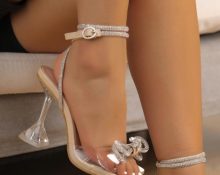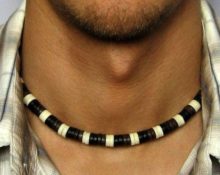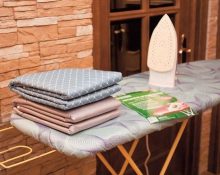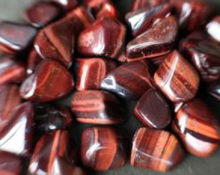Ruby is considered one of the most valuable and coveted gemstones. It symbolizes passion, protection and royalty. But along with its popularity, the number of fakes on the market is also growing.
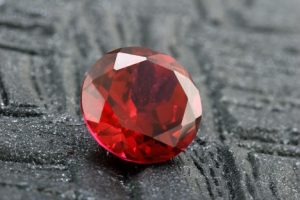
Which country has the most natural rubies?
The largest reserves of natural rubies are found in Myanmar (formerly known as Burma). Rubies from this country, especially from the Mogok region, are known for their excellent quality and rich color, making them especially valuable in the global gemstone market.
In addition to Myanmar, significant deposits of rubies are also found in Thailand, Sri Lanka, Tanzania, Afghanistan, Cambodia and other countries. However, despite the availability of rubies in different parts of the world, Burmese rubies are still considered the most valuable due to their unique quality and color.
Where are the most expensive rubies sold?
The most expensive rubies are usually sold at specialized auctions and in high-end jewelry stores around the world.The main auction houses where rare and valuable rubies are often sold are:
- Christie's: This renowned auction house regularly hosts gem auctions where rare and valuable rubies are sold.
- Sotheby's: Another leading auction house that conducts sales of high quality gemstones.
- Bonhams: this auction house is also known for selling high quality rubies and other gemstones.
In these areas, rubies, especially rare ones or stones of exceptional quality, can sell for many millions of dollars.
In addition, prestigious jewelry brands such as Cartier, Bulgari, Tiffany & Co. and Harry Winston, also offer quality rubies in their collections, and they can be very expensive due to their uniqueness, provenance, treatment and design of the piece.
But it's worth noting that buying from an auction or from a prestige brand doesn't always guarantee you'll get the best value for your money. If you are considering buying a ruby as an investment, it is recommended that you consult an expert or gemologist to evaluate the stone before purchasing.
How to distinguish a ruby from a fake
Ruby, like a gemstone, has won the hearts of many due to its rich red color and natural luster. However, there are also numerous fakes. To distinguish a real ruby from a fake, pay attention to its color and glow: when illuminated, the ruby should emit a blue glow, which its artificial counterparts will not have. Also use a magnifying glass to examine the internal characteristics of the stone. Real rubies usually contain small inclusions, while many fakes appear perfectly clean.
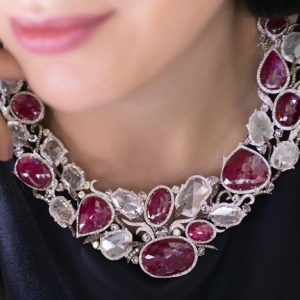
How to distinguish a real ruby from an artificial one
You can distinguish a real ruby from an artificial one using the following methods:
- Natural rubies have unique internal characteristics or inclusions that are often referred to as the “fingerprints” of the stone. When examined under a magnifying glass, an artificial ruby often looks perfectly clean or has inclusions uncharacteristic of natural rubies.
- Under light, a real ruby often gives off a blue glow, unlike most man-made rubies.
- Rubies are good heat conductors. If a ruby quickly becomes warm in your hand, this may indicate that it is genuine. Artificial stones often stay cold longer.
- Rubies are one of the hardest natural substances, second only to diamonds. If you can scratch a ruby with a less hard object, it is most likely a fake.
- A real ruby is expensive due to its rarity and quality. If the stone offered to you is too cheap, this may be a signal about its artificial origin.
For maximum confidence in the authenticity of a ruby, it is best to consult a certified gemologist or gemstone expert who can perform a professional evaluation.
What is the difference between corundum and ruby?
Corundum and ruby are closely related as both are varieties of the same mineral. The difference between them lies in the color and the impurities present:
- Corundum is a mineral composed primarily of aluminum oxide (Al₂O₃). It is the second hardest mineral after diamond on the Mohs scale.
- Ruby - This is red corundum. If corundum is any other color, it is not considered a ruby.
- Corundum can be almost any color, depending on the impurities it contains.For example, blue colored corundum is known as sapphire.
- Ruby is always red. Its red color is due to the presence of chromium impurities.
- Corundums, which are not rubies or sapphires, are often used industrially as abrasives due to their hardness.
- Rubies are considered one of the most valuable gemstones and are often used in jewelry.
To simplify: All rubies are corundums, but not all corundums are rubies. If corundum is not red in color, it is classified as either sapphire (if it is clear and cuttable) or simply as corundum for industrial use.
How to identify a natural ruby
In addition to standard methods for identifying natural rubies, such as examining inclusions under a magnifying glass or testing thermal conductivity, there are lesser-known ways to determine its authenticity:
- Book test: Ruby is birefringent, which means that when text or a line on paper is viewed through a ruby, the text or line may appear blurry or double. Artificial stones such as glass or cubic zirconia will not give this effect.
- Reaction to chemicals: natural ruby will not react or change when in contact with most household chemicals. Perform a short-term test by immersing the stone in a weak solution of vinegar or citric acid. Artificial materials may lose shine or change color.
- Glow in the dark: Some natural rubies, especially those that have been treated with heat, may glow faintly in the dark after being exposed to a strong light source.
- Consideration of the structure of the stone: If you have access to a microscope, look at the surface structure of the ruby.Natural rubies often have an uneven or grainy texture, while man-made stones may have smooth or “flowing” lines due to the process of creating them.
- Density determination: this method requires some equipment, but determining the ruby's density can help determine its authenticity. A natural ruby will have a different density compared to most man-made stones.
In addition to these methods, consulting with a professional gemologist is always recommended to ensure the authenticity of your stone.


 0
0